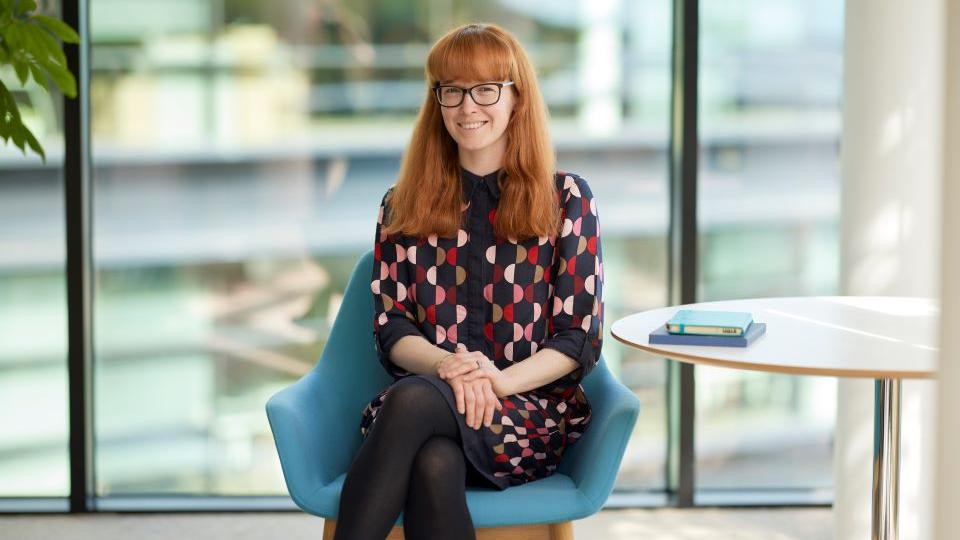
Kirsty Gibson, Baillie Gifford
Companies like Amazon and DoorDash are challenging the status quo by blending digital and physical innovation.
You or your clients' capital may be at risk.
When you click 'buy now' on Amazon, your orders speed to your doorstep thanks to vast amounts of data centre circuitry, miles of automated warehouse conveyor belts and a flotilla of vans and other vehicles.
The company is known as a digital disruptor. But that's only half the story. While its customers mainly interact with it online, much of Amazon's competitive advantage comes from its physical operations.
In this regard, it heralded a new wave of disruption. For most of the last century, the leading companies operated almost solely in the physical world, and their competitive advantages were forged by their physical assets and access to capital to fund them. Take, for example, aviation, energy and newspapers.
Then the proliferation of the internet gave rise to businesses with purely digital business models. They were capital-light and nimble but quite narrow in terms of the sectors they disrupted, including advertising, media and analytics.
Amazon, however, has always been different. As an online bookseller, it had to build the physical infrastructure to do so. It was a similar story when it moved into cloud computing. Amazon Web Services is perceived as a digital service, but its strength depends on the firm's huge investment in data centre hardware.
Amazon's effort to bolster its digital offerings with expenditure on physical operations continues to this day, from running its own cargo airline to plans to deploy thousands of satellites into low-earth orbit to provide broadband to communities below.
Chemicals and cars
Other examples of companies following Amazon's lead in intertwining computer code with physical processes include Solugen and Rivian Automotive.
The former is attempting to disrupt the industrial chemicals industry by using artificial intelligence software to engineer enzymes, which it then uses to convert sugars into more valuable molecules. Solugen's advantage over traditional counterparts is that it doesn't use fossil fuels and avoids creating carbon emissions or waste.
Solugen's Bioforge reactor system is a fraction of the size of the colossal manufacturing plants usually required to make chemicals, which helps keep its costs down. And because it is modular, the reactors can be rolled out at many more locations.
Rivian, by contrast, is seeking to disrupt the market for pick-up trucks and sports utility vehicles with its range of electric automobiles. What you see first are the manufacturing plants, but it's also all about software. For example, it has provided customers with over-the-air updates to make towing trailers easier and has upgraded the suspension system to smooth rides. And it's also investing in self-drive technologies.
Augmenting, not displacing
A slightly different type of company merging the physical and digital realms are those looking to build upon existing physical infrastructure rather than trying to replace it. They are more capital-light than the other kind but face the challenge of having to convince traditional businesses of their worth.
DoorDash is one example. Its digital offering is grounded in an understanding of the physical businesses it works with as it simultaneously provides a service to three different classes of client:
- Consumers wanting meals and store items delivered to their homes
- Self-employed drivers needing to be told where to pick up and drop off the orders
- Restaurants and stores supplying the food and other products
The company also invests in physical infrastructure. Its DashMart warehouses directly employ staff to stock items and hand them off to the drivers. It lets DoorDash continue serving consumers at times when other retailers are closed. This also benefits its self-employed drivers, who often make deliveries to supplement a daytime job.
Self driving lorries
Aurora Innovation also falls into the second bucket of physical-digital companies.
The driverless lorry pioneer has opted to avoid manufacturing vehicles of its own. Instead, it has partnered with the automotive parts specialist Continental to offer its self-driving hardware and software as a service that takes control of retrofitted rigs.
As the truck industry faces an inadequate supply of drivers, there's a need for this technology and Aurora has the clear support of industry insiders Volvo Trucks and FedEx are among those to have shown an early interest. But the key to driving costs out of the system will be decreasing the level of remote support it needs to provide over the long-term.
Not every business needs to merge 'bits and atoms' to succeed. Nor is our rationale for investing always based on the paradigm for those who try.
However, asking how companies approach the two worlds can be helpful when considering their prospects over the long term.
The companies we invest in need to make far-sighted investments themselves, and that often involves committing capital and resources to a combination of physical and digital innovation. Doing so gives them a chance to be transformative and disruptive.
Read more about Baillie Gifford
Kirsty Gibson, Investment Manager
Kirsty Gibson is an Investment Manager at Baillie Gifford. She joined in 2012 and began her career on the US Equities Team, moving on to spend several years in small and large cap global equities departments, before returning to US Equities. She graduated MA (Hons) in Economics in 2011 and MSc in Carbon Management in 2012, both from the University of Edinburgh.
Important Information
For professional investors only.
This article does not constitute, and is not subject to the protections afforded to, independent research. Baillie Gifford and its staff may have dealt in the investments concerned. The views expressed are not statements of fact and should not be considered as advice or a recommendation to buy, sell or hold a particular investment.
Baillie Gifford Investment Management (Europe) Limited provides investment management and advisory services to European (excluding UK) clients. It was incorporated in Ireland in May 2018. Baillie Gifford Investment Management (Europe) Limited is authorised by the Central Bank of Ireland as an AIFM under the AIFM Regulations and as a UCITS management company under the UCITS Regulation. Baillie Gifford Investment Management (Europe) Limited is also authorised in accordance with Regulation 7 of the AIFM Regulations, to provide management of portfolios of investments, including Individual Portfolio Management ('IPM') and Non-Core Services. Baillie Gifford Investment Management (Europe) Limited has been appointed as UCITS management company to the following UCITS umbrella company; Baillie Gifford Worldwide Funds plc. Through passporting it has established Baillie Gifford Investment Management (Europe) Limited (Amsterdam Branch) to market its investment management and advisory services and distribute Baillie Gifford Worldwide Funds plc in The Netherlands. Baillie Gifford Investment Management (Europe) Limited is a wholly owned subsidiary of Baillie Gifford Overseas Limited, which is wholly owned by Baillie Gifford & Co. Baillie Gifford Overseas Limited and Baillie Gifford & Co are authorised and regulated in the UK by the Financial Conduct Authority.



